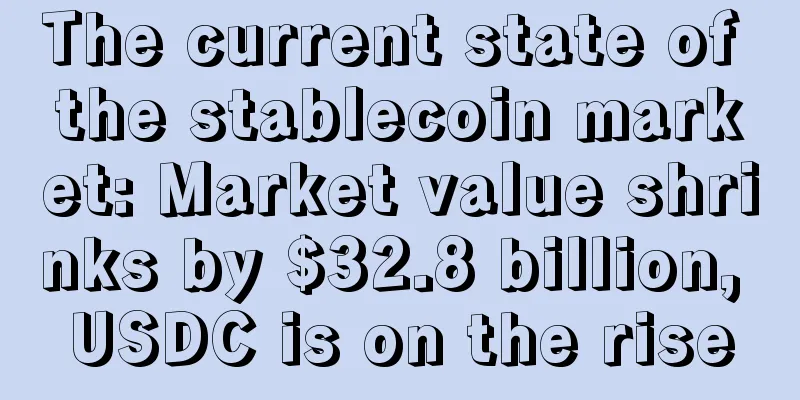Report: 90% of institutional investors expect to invest more in crypto assets such as Bitcoin in the next five years

|
80% of institutional investors believe that the recent quantitative easing policies adopted by central banks and governments due to the coronavirus pandemic could lead to higher inflation rates. In the next five years, most institutions will turn to Bitcoin to hedge against currency depreciation. According to a recent Evertas research report on institutional investment in cryptocurrencies, 90% of institutional investors expect to invest more in crypto assets such as Bitcoin between now and 2025, while 80% expect retail investors to do the same. Square recently announced that it had purchased another $50 million worth of Bitcoin from its balance sheet, which confirms Evertas' findings. The first institution to lead this trend was MicroStrategy, which invested $500 million in Bitcoin. Max Keiser, founder of Heisenberg Cap, commented on this institutional FOMO (fear of missing out) sentiment in a recent tweet. Applying game theory to these noteworthy developments, the motivations of institutions and the impact on Bitcoin’s price and volatility become clearer. Crucially, game theory states that the payoff of one player depends on the strategy implemented by another player. Square’s move comes after MicroStrategy’s Michael Saylor’s decision to buy Bitcoin became popular and made headlines. Peers reacted to MicroStrategy’s move, but once more than 60% of institutions in the industry invest in Bitcoin, a Nash equilibrium may be reached. Basically, Nash equilibrium is the stage of "no regrets" for institutions, but as the circulation of US dollars in Bitcoin increases, the market value may increase, and the trading volume of derivatives and spot exchanges will increase proportionally. However, the other side of Nash equilibrium is a situation where you can neither lose nor win. Currently, Bitcoin is an asymmetric bet due to its volatility. Bitcoin volatility over the past decade || Source: Woobull Charts The volatility of Bitcoin is the main driver of its profitability. Volatility is what has led to Bitcoin being ranked first among assets that offer high returns on investment. However, when Nash equilibrium is reached, in other words, when a large number of institutions buy Bitcoin and invest, volatility may become more seasonal. Currently, the volatility of Bitcoin depends on the stages of the market cycle. However, Nash equilibrium may lead to investors betting against each other in a competitive market, which may create and destroy value for individual investors. Therefore, it is important for retail traders to pay attention to these movements and signals to find out where the price of Bitcoin is headed. Back in 2013, Michael Saylor tweeted that Bitcoin’s days were numbered. Michael Saylor tweets from 2013 || Source: Twitter However, Bitcoin is now the main asset of MicroStrategy's treasury, and 7 years later, his position has taken a 180-degree turn. In these 7 years, Bitcoin's ROI is as high as 9000%. At the current stage, institutional investors like MicroStrategy are entering, and the smart money entering Bitcoin may increase the much-needed capital inflows on spot exchanges. To understand its impact on Bitcoin's price, take a look at Bitcoin's volume and price data over the past five years. Volume and price || Source: Bitcoinity Although trading volume is not perfectly correlated with price, according to data from Bitcoinity, a trend has emerged over the past two years where trading volume has remained above $9.5 billion. The corresponding price is in the $7,290-$10,500 range. In order for the price of Bitcoin to break through the $10,000 level, trading volume needs to increase by 2 to 3 times. This can be achieved through institutional investment from more companies such as MicroStrategy and Square. Reaching Nash equilibrium may require inflows of more than $30 billion from various institutions, and this will happen in the next five years. Until then, the game will continue and the domino effect will continue. The overall trader sentiment based on the on-chain indicators of CoinMarketCap is neutral, however, every time smart money flows into Bitcoin, it is overwhelmed by bullish sentiment. |
>>: [100 Questions and Answers about Filecoin in Pictures] Question 37: What is Filecoin’s FIP?
Recommend
What does a woman's big nostrils mean? What does one big and one small mean?
The nose represents the palace of wealth. Does it...
Love line bifurcation diagram 13 diagram
Love line bifurcation diagram 13 diagram The end ...
What does a mole on a woman's chin mean?
In the eyes of many women, moles are something th...
On March 25, Bitcoin mining difficulty will experience the biggest adjustment in recent years, and is expected to drop by 13%
Over the past few weeks, Bitcoin has experienced ...
Xu Mingxing: The mining machine consumes so much electricity, what are they calculating?
Author: OK Blockchain Engineering Institute Among...
A complete analysis of a woman's square face, her personality and her destiny
Women with square faces look more heroic, so is a ...
Philtrum face reading
Everyone has a long and thin line under the nose,...
PayPal, Musk and Cryptocurrency: Enlightenment, Progress and Exploration
Original title: "PayPal, Musk and Cryptocurr...
Analysis of moles that may lead to cheating and unhappy marriages
As one of the traditional physiognomy techniques, ...
Why can Bitcoin solve the economic problems that have long plagued people?
【Abstract】 As the Triffin dilemma states, it is i...
Are men with eye bags serious and kind?
Men with double eyelids are not particularly seri...
Two ears with different contours have different destinies
Facial features include many aspects. Depending o...
Indian media: Bitcoin can replace gold and become a substitute for cash
As the government confiscates private gold and st...
What is the personality of a person with a mole on the chest? Are moles with strange shapes and dark colors considered bad luck moles?
Speaking of moles, I believe everyone is familiar ...
Coinbase Pro to List Tether (USDT) and Now Supports USDT Deposits
According to BlockBeats, on April 22, according t...









